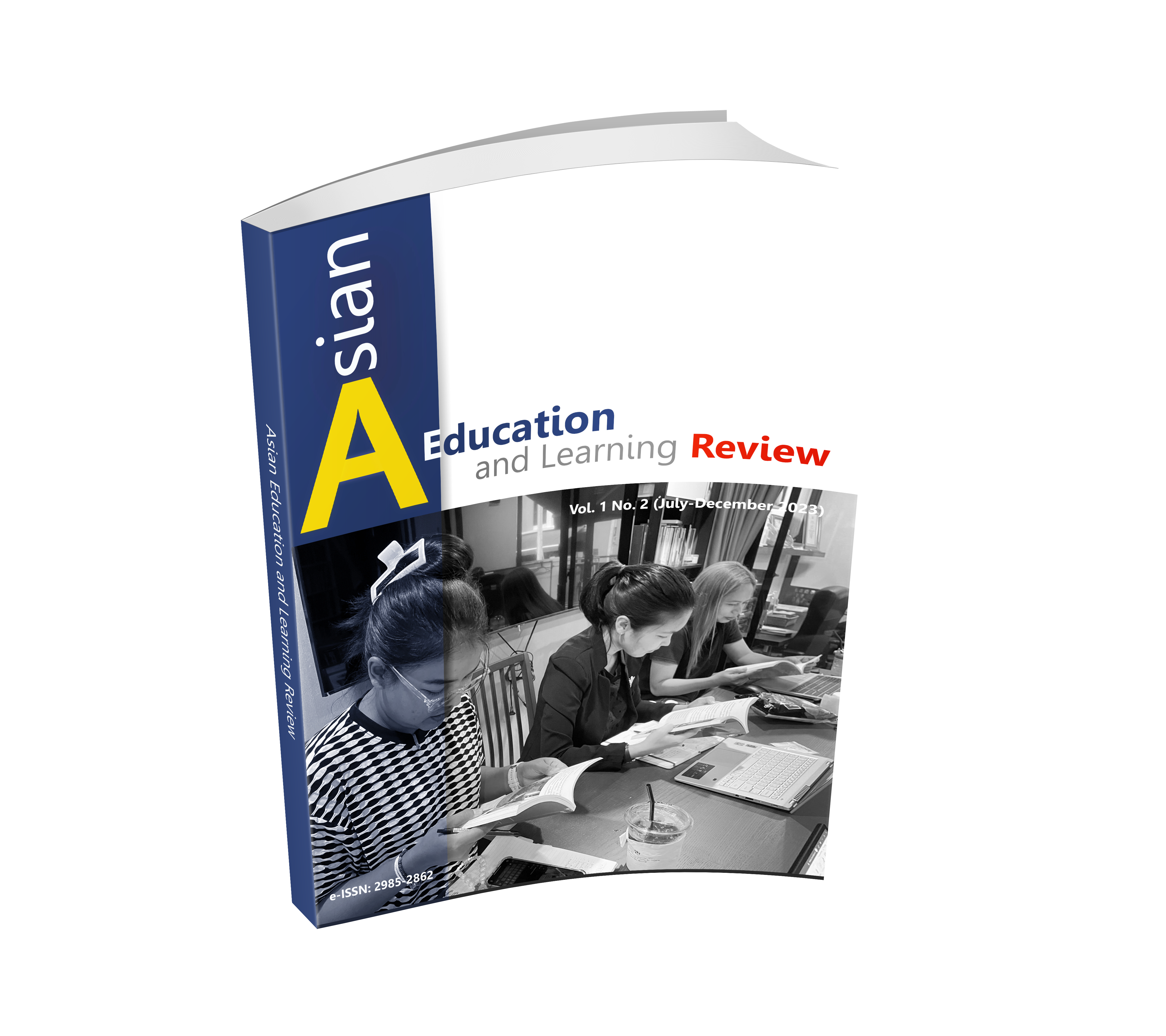ENHANCING EMPLOYABILITY THROUGH WORK-INTEGRATED LEARNING: AN IN-DEPTH ANALYSIS OF STRATEGIES, CHALLENGES AND IMPACTS ON GRADUATES’ CAREER READINESS
DOI:
https://doi.org/10.14456/aelr.2023.8Keywords:
Work-Integrated Learning, Strategies, Challenges, ImpactsAbstract
By thoroughly examining work-integrated learning (WIL)'s strategies, challenges, and impacts, the research aims to provide evidence-based insights to guide educators, institutions, and policymakers in optimizing WIL programs. This study contributes to the broader discourse on enhancing students' employability and preparing them for the demands of the modern workforce, reinforcing the importance of WIL as a dynamic and effective educational strategy. The findings found that enhancing employability through WIL consists of 1) strategies in WIL were; 1.1) an overview of common WIL strategies, 1.2) case studies illustrating successful implementation, 1.3) a comparative analysis of strategies across disciplines, 1.4) the role of technology in enhancing WIL experiences. 2) Challenges in implementing WIL were 2.1) identification of common challenges, 2.2) addressing issues related to program structure and coordination, 2.3) overcoming barriers to student participation, and 2.4) employer-related challenges and engagement strategies. 3) Impacts on graduates' career readiness were 3.1) analysis of academic performance and skill development, 3.2) examination of graduates' transition to the workforce, 3.3) perspectives of employers on WIL graduates, and 3.4) long-term career outcomes and sustainability. It was concluded that the study provides a comprehensive overview of WIL, delineating key strategies, challenges, and impacts. This nuanced exploration equips educators and institutions with valuable insights for refining and optimizing WIL programs, ensuring their effectiveness in enhancing students' employability and career readiness.
Downloads
References
Billett, S. (2009). Realising the educational worth of integrating work experiences in higher education. Studies in Higher Education, 34(7), 827-843.
Billett, S. (2011). Curriculum and pedagogic bases for effectively integrating practice-based experiences. New South Wales: Australian Learning and Teaching Council.
Boud, D. (2019). Reframing assessment as learning: Seeing learning through assessment glasses. Cham: Springer.
Boud, D., & Solomon, N. (2001). Work-Based Learning: A New Higher Education?. Buckingham: SRHE and Open University Press.
Bowen, G. (2009). Document Analysis as a Qualitative Research Method. Qualitative Research Journal, 9(2), 27-40.
Creswell, J., & Creswell, J. (2018). Research Design: Qualitative, Quantitative, and Mixed Methods Approaches. 5th ed. California: SAGE Publications, Inc.
Harvey, L., Moon, S., & Geall, V. (1997). Graduates' work: Organisational change and students' attributes. Birmingham: University of Central England.
Holland, J. (1997). Cooperative education: Historical perspective and current challenges. Journal of Cooperative Education, 32(1), 9-22.
Humby, R., Eirich, R., Gathercole, J., & Gaudet, D. (2022). Work-Integrated Learning: Community and Student Engagement Through Informed Educational Technology Choices. In S. Chakravarti & B. Boukareva. (eds.). Cases on Global Innovative Practices for Reforming Education (pp. 157-177). Pennsylvania: IGI Global.
Jackson, D. (2020). Internships in the 21st century: Navigating the changing landscape. New York: Routledge.
Kolb, D. (1984). Experiential learning: Experience as the source of learning and development. New Jersey: Prentice-Hall.
Murtazin, K., Shvets, O., Meeter, M., & Piho, G. (2022). Characteristics of Learning Outcomes for Integrating Work-Based Learning into the Business Information Technology Study Program. A paper presented at the 45th Jubilee International Convention on Information, Communication and Electronic Technology, Opatija, Croatia.
Novriadi, F., Fitria, Y., & Erita, Y. (2023). Kajian dampak pembelajaran model fragmented dan motivasi belajar terhadap siswa sekolah dasar. Pendas: Jurnal Ilmiah Pendidikan Dasar, 8(1), 2034-2049.
Nuninger, W., & Châtelet, J. (2022). Key Processes for the Performance of Work-Integrated Learning in HE: Focusing on Talents with a Winning-Foursome. In Research Anthology on Vocational Education and Preparing Future Workers (pp. 355-385). Pennsylvania: IGI Global.
Smith, C., Ferns, S., Russell, L., & O'Shea, J. (2019). Enhancing employability through work-integrated learning. London: Springer.
Smith, C., & Rayner, G. (2020). Work-integrated learning in higher education: A guide for quality programs. Abingdon: Routledge.
Vygotsky, L. (1978). Mind in Society: The Development of Higher Psychological Processes. Massachusetts: Harvard University Press.

Downloads
Published
How to Cite
Issue
Section
License
Copyright (c) 2023 Authors

This work is licensed under a Creative Commons Attribution-NonCommercial-NoDerivatives 4.0 International License.






.png)


